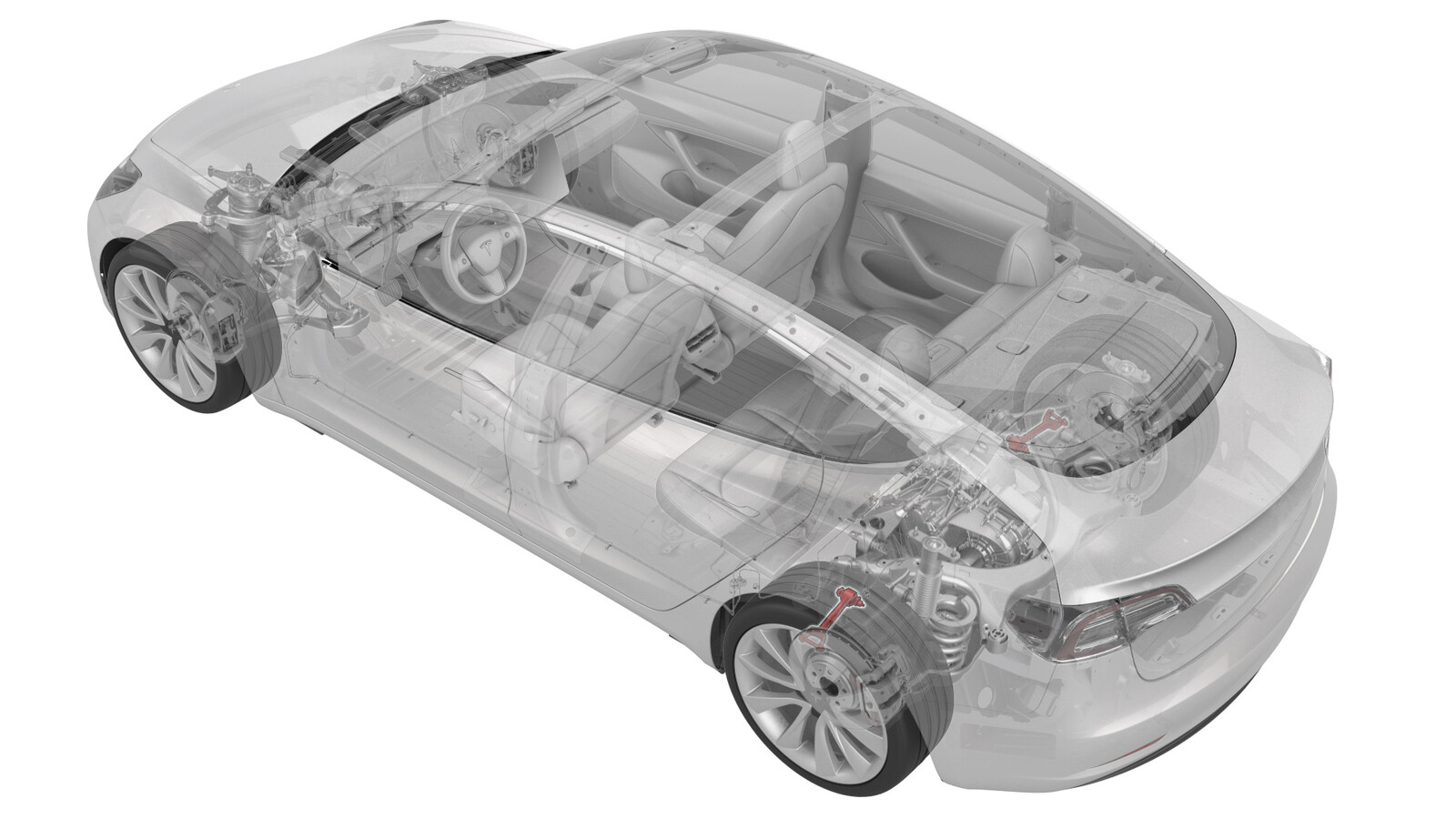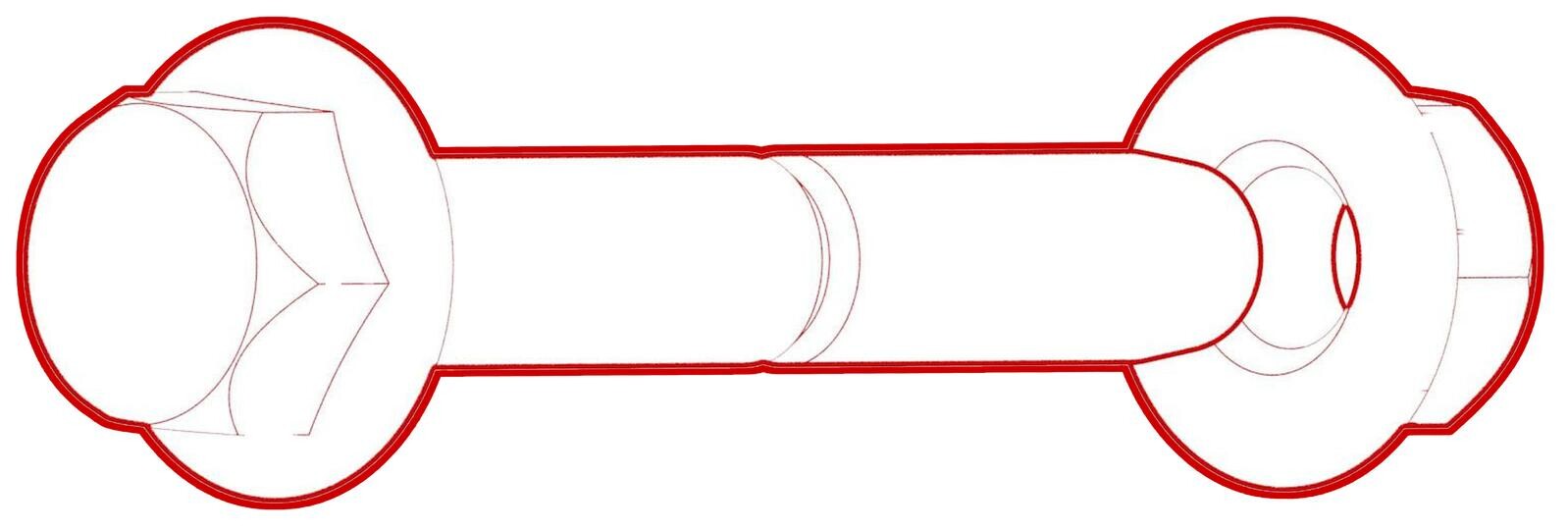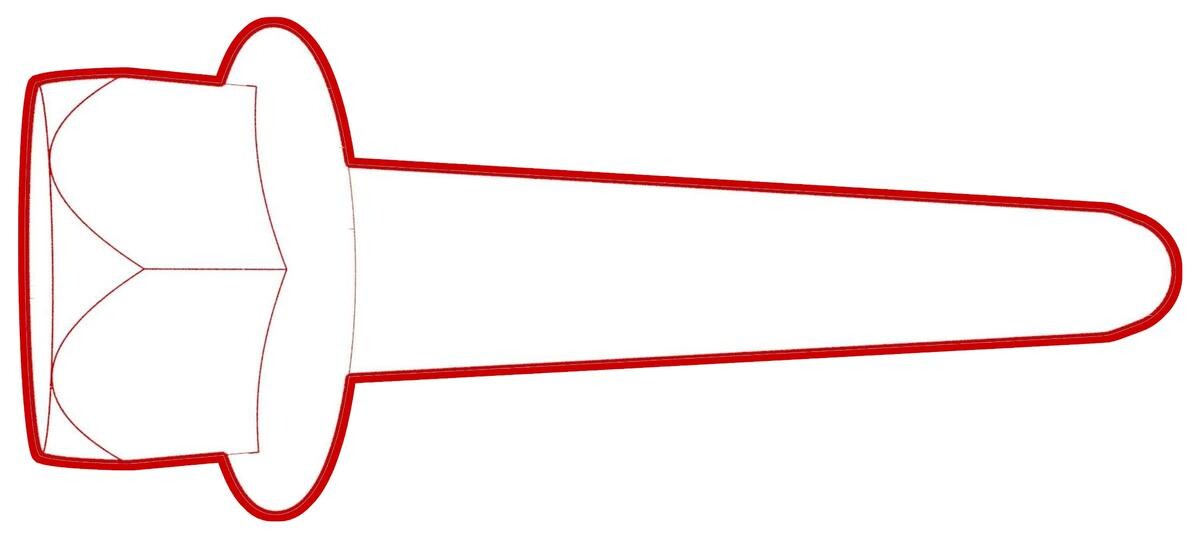Toe Link - Rear - LH (Remove and Replace)
 Correction code
31032002
0.54
NOTE: Unless otherwise explicitly
stated in the procedure, the above correction code and FRT reflect all of the work
required to perform this procedure, including the linked procedures. Do not stack correction codes unless
explicitly told to do so.
NOTE: See Flat Rate
Times to learn more about FRTs and how they are created. To provide feedback on
FRT values, email ServiceManualFeedback@tesla.com.
NOTE: See Personal Protection to make sure wearing proper PPE when
performing the below procedure. See Ergonomic Precautions for safe and healthy working practices.
Correction code
31032002
0.54
NOTE: Unless otherwise explicitly
stated in the procedure, the above correction code and FRT reflect all of the work
required to perform this procedure, including the linked procedures. Do not stack correction codes unless
explicitly told to do so.
NOTE: See Flat Rate
Times to learn more about FRTs and how they are created. To provide feedback on
FRT values, email ServiceManualFeedback@tesla.com.
NOTE: See Personal Protection to make sure wearing proper PPE when
performing the below procedure. See Ergonomic Precautions for safe and healthy working practices.
- 1135103-00-A Tool, Spring Compressor, Hook, Model 3
- 1137855-00-A TOOL, REAR RIDE HEIGHT TORQUE, MODEL 3
- 1081765-00-A 3/4 TON UNDERHOIST STAND
- 1459409-00-A ADAPTER, HUB JACK, MODEL 3
Remove
- Remove the LH rear wheel. See Wheel Assembly (Remove and Install).
- Use a paint pen to apply a witness mark to the cam bolt lobe and rear subframe so that the two can be realigned later on during the LH rear toe link installation.
-
Remove the cam bolt, the cam
washer, the nut that attach the rear toe
link to the knuckle.
- Remove the mid aero shield panel. See Panel - Aero Shield - Rear (Remove and Replace).
-
Remove the bolt and nut that
attach the rear toe link to the rear subframe, and then remove the rear toe
link from the vehicle.
Install
- Install the LH rear toe link into the vehicle, and then install and hand tighten the cam bolt, the cam washer, bolt and nuts that attach the rear toe link to the subframe and to the knuckle.
- Remove the LH rear suspension cover. See Cover - Rear Suspension - LH (Remove and Replace).
-
Install a spring compressor
onto the LH rear coil spring. Line up the hooks per image and verify that
the spindle goes through the body opening when the suspension is
compressed.
-
Remove the bolt that attaches the brake rotor to the hub.
NoteUse of the following tool(s) is recommended:
- 10 mm socket
- 2 in extension
-
Install the hub jack adapter onto the LH rear hub and hand-tighten the lug
nuts.
-
Use an underhoist stand to support the hub jack adapter.
-
Measure the distance between
the bottom of the quarter panel to the center of the rear axle to make sure
that the rear suspension is set to ride height: The distance should measure
378 mm.
-
Tighten the bolt and nut
that attach the rear toe link to the knuckle and mark the bolt and nut area
with a paint pen.
 76 Nm (56.0 lbs-ft)
76 Nm (56.0 lbs-ft) - Use the witness marks to align the cam bolt lobe to the rear subframe and tighten the nut to secure the LH rear toe link in position.
-
Tighten the bolt and nut
that attach the rear toe link to the subframe and mark the bolt and nut area
with a paint pen.
 85 Nm (62.7 lbs-ft)
85 Nm (62.7 lbs-ft) -
Remove the underhoist stand from underneath the LH rear suspension.
-
Remove the lug nuts that attach the hub jack adapter, and then remove the
hub jack adapter from the vehicle.
-
Install the bolt that attaches the LH rear brake rotor to the hub.
 5 Nm (3.7 lbs-ft)NoteUse of the following tool(s) is recommended:
5 Nm (3.7 lbs-ft)NoteUse of the following tool(s) is recommended:- 10 mm socket
- 2 in extension
- Remove the spring compressor from the LH rear coil spring.
- Install the LH rear suspension cover. See Cover - Rear Suspension - LH (Remove and Replace).
- Install the LH rear wheel. See Wheel Assembly (Remove and Install).
- Refer to the Alignment Requirement tables to determine whether an EPAS alignment check (EC) or four wheel alignment check (AC) is necessary. If performed, add the alignment check/adjust correction code as a separate activity to the SV. See Alignment Requirement - Suspension.